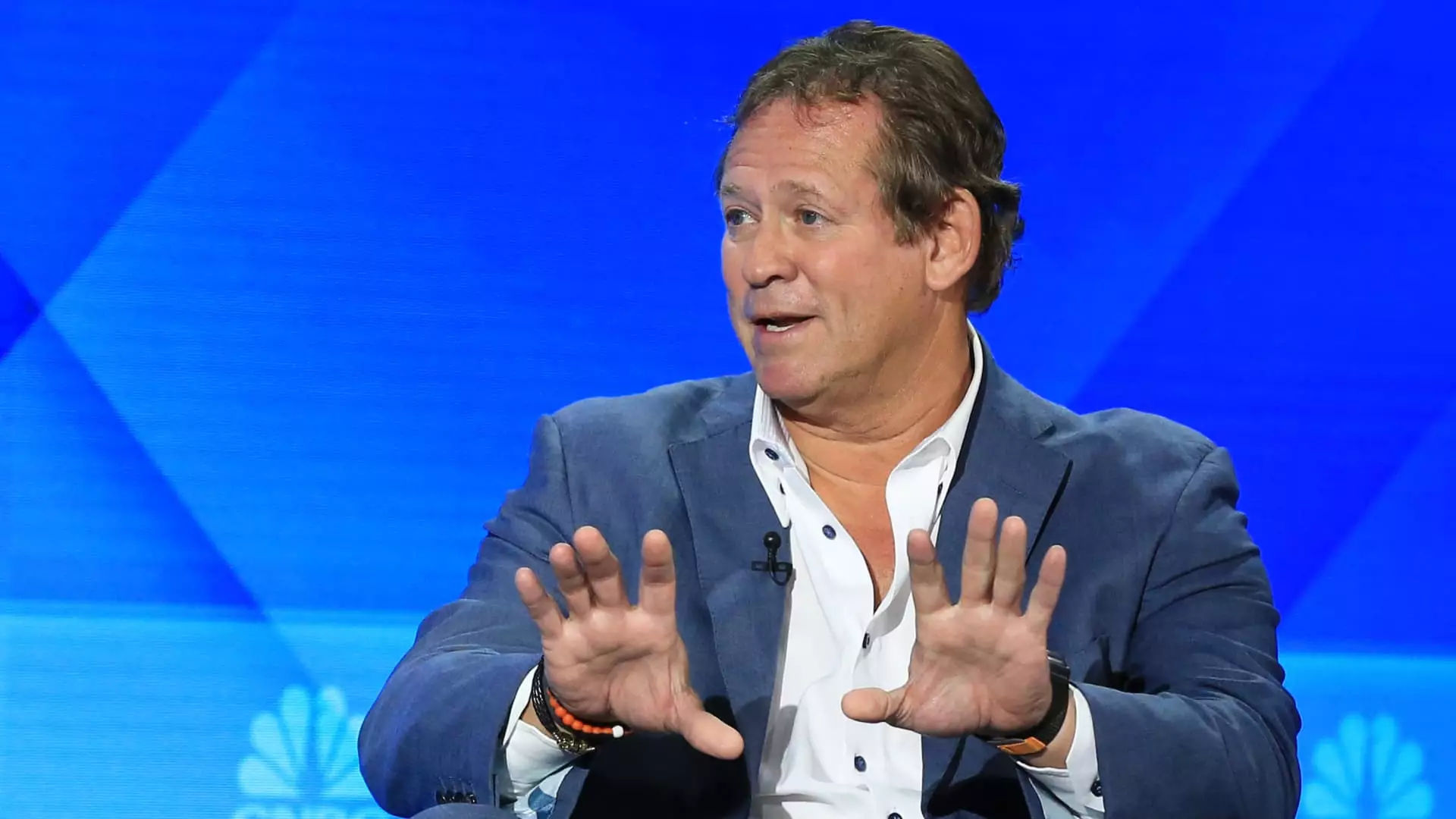For decades, fixed income investors have endured the frustration of historically low interest rates, which suppressed bond yields and limited income potential. Yet, according to Rick Rieder, BlackRock’s Global Fixed Income CIO, the dramatic rise in bond yields since 2022 signals an extraordinary “generational opportunity” for investors to capture meaningful income streams. This shift reflects more than just cyclical market behavior—it represents a structural reset in how bonds can complement portfolios amidst ongoing economic uncertainty.
Unlike the prior era when bond duration reliably cushioned equity declines, today’s environment challenges that long-held belief. Rieder astutely observes that income from high coupons now plays a far more critical role in offsetting equity risk than the traditional price stability of bonds. This nuance is crucial: investors should not merely chase yield but appreciate that cash flow from coupons, underpinned by healthier corporate balance sheets, functions as a more dependable ballast during market volatility.
Quality Income Without Excess Risk
Skeptics may caution that higher yields often imply elevated risk, yet the reality is subtler. Corporations have significantly delevered in the post-pandemic period, strengthening their creditworthiness. This deleveraging reduces the specter of default that typically haunts high-yield assets, suggesting that investors can secure attractive income without dramatically inflating risk profiles. Rieder’s confidence underscores a broader shift—the quality of income today is more robust, grounded in fundamental improvements within corporate America and select European markets.
Moreover, choosing the right segments of the fixed income market is paramount. Rather than blanket exposure, Rieder favors the “front and belly” of the yield curve, where returns are compelling, and credit risks are more contained. Such targeted strategies harness the best risk-reward trade-offs at this particular juncture, underlining the sophistication necessary to navigate complex fixed income landscapes in a post-zero rate world.
A Bold Bet on European Credit and Currency Dynamics
One especially compelling angle lies in European credit markets. Peripheral sovereign bonds—Italy and Spain included—and corporate credit offer yields that markedly exceed U.S. levels. While risks remain, Rieder highlights the unique edge afforded to dollar-based investors: cross-currency swap benefits that enhance returns by 2 to 2.5 percent. This currency dimension is a game-changer, granting U.S. investors access to compelling income streams backed by solid European issuers, combined with currency hedges that minimize exchange rate exposure.
This insight speaks to a frequently overlooked truth: diversification beyond U.S. borders and leveraging currency dynamics can unlock value that domestic-only portfolios fail to capture, especially in fixed income sectors increasingly characterized by low yields and tight spreads at home.
The Growing Appeal of Securitized Assets Over Traditional Bond Classes
In the U.S., securitized products—particularly commercial mortgage-backed securities (CMBS) and non-agency mortgage-backed securities (MBS)—have stepped into the spotlight on the income front. They form a substantial portion of BlackRock’s flexible income ETF and offer a rare combination of yield, liquidity, and improved credit quality. Rieder’s decision to trim investment-grade corporate bond exposure in favor of high-yield bonds and agency MBS reflects a pragmatic acknowledgement of evolving market conditions.
Agency MBS, for instance, stand out as liquid, income-generating instruments that carry government backing or implicit support, which can reduce default risks compared to lower-grade corporates. This shift underscores the importance of nuanced fixed income allocation—investors must be agile and discerning rather than anchored to historical asset-class weightings.
Major Market Risk: A Rising Federal Deficit
While the bond market’s current landscape appears ripe with opportunity, Rieder does not shy away from cautionary signals. The ballooning U.S. federal deficit remains a structural threat to fixed income stability. May’s $316 billion deficit, and the ongoing necessity for substantial Treasury auctions, inject volatility particularly into the long end of the yield curve. Inflation sensitivity at these longer maturities means the federal government’s fiscal trajectory could complicate the bond market’s path forward.
This vulnerability brings to light a hard truth many investors overlook: macroeconomic and policy-driven risks can quickly erode the income benefits even of well-chosen fixed income securities. Vigilance is therefore essential, especially in a political climate where fiscal discipline remains uncertain.
A Cautious Optimism Rooted in Innovation and Productivity
Despite short-term economic headwinds and risks, Rieder projects a cautiously optimistic growth outlook for the latter half of the year. Central to this positive view is an anticipation of technological breakthroughs driving a “greatest technology revolution,” poised to boost productivity and, consequently, rein in inflationary pressures. If realized, this paradigm could ultimately lead to lower interest rates down the road—a tailwind for both bonds and equities.
Yet, near-term uncertainties linger, including labor market softness and geopolitical disputes, such as tariff negotiations. Notably, the uncertainty surrounding President Trump’s willingness to adhere to tariff deadlines adds an unpredictable dimension to corporate capital expenditures and innovation timelines. For investors aligned with center-right liberalism, this underscores the need for balanced economic policies that favor free trade, technological advancement, and fiscal responsibility to foster sustainable growth.
Why Investors Must Act Now—Before the Window Closes
Rieder’s central message rings clear: the high-yield environment in fixed income may not endure indefinitely. The combination of improved corporate balance sheets, elevated coupon payments, currency advantages, and selective asset-class preferences provides an unprecedented income opportunity unlikely to be replicated soon. As inflation moderates and productivity gains materialize, interest rates may once again trend lower, compressing yields and squeezing income potential.
From a pragmatic, center-right investor perspective, capitalizing on this fleeting advantage requires disciplined portfolio rebalancing and strategic allocation shifts. It is not a time to cling stubbornly to outmoded assumptions about bonds as a mere hedge but rather to embrace bonds as a dynamic source of income and portfolio resilience in a complex macroeconomic era. Ignoring this change risks missing out on income streams vital to offset equity market gyrations and support long-term wealth growth.

